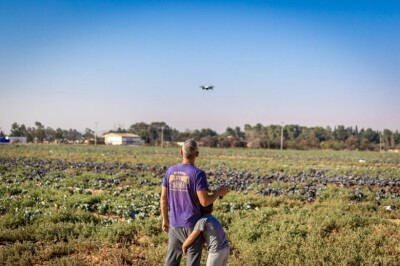In 2016, the FAA created the Drone Advisory Committee (DAC), which was designed to advise it on introducing unmanned aircraft into the national airspace system. Committee members came from across the manned and unmanned space, as it included representatives from organizations that ranged from the National Air Traffic Controllers Association to DJI to American Airlines. Companies that utilize the technology were represented as well though, as representatives from CNN and BNSF Railway were also appointed to the committee. The DAC has met several times since that announcement, although there hadn’t been much news about it of late. All of that changed when Michael Chasen, CEO of PrecisionHawk, was appointed to lead the DAC as its new chairman.
It’s a change that’s both familiar and expected. It’s familiar because Chasen has been a member of the committee since he replaced former PrecisionHawk CEO Bob Young, while it’s expected since the FAA posted a notice in the Federal Register soliciting qualified candidates to serve on the DAC in late 2018. His experience and familiarity with old and new members of the group has provided him with an incredible perspective around how he wants to now lead it.“I’ve been a member of the DAC for a couple years, and in that time we made a great deal of progress,” Chasen said. “Over those past two years though, people were still figuring out what it would mean to use this technology. They were looking for answers. Today, we have those answers, and they going to be used to create a framework that will allow us to identify technology and policy challenges that will enable this industry to flourish.”Chasen has previously talked about what it will mean to enable the exponential growth the drone industry has been waiting for, and with 12 new DAC members appointed fill open vacancies, the group is in a better position than ever to enable that growth. You can see the full roster here, and Chasen believes this variety will help drive necessary developments.“You can see numerous different sectors being represented in the new members that will allow us to identify what it will mean for this technology to make sense in a variety of spaces,” Chasen told Commercial UAV News. “At the same time, we want to make sure that a use case can support a variety of applications. BVLOS operation is something that impacts multiple industries, and that’s why we want to get it right from a policy and technology perspective.”An announcement about the next meeting of the DAC has already taken place, which illustrates just how quickly Chasen is planning to guide those policy and technology conversations. The agenda includes items that range from an update on counter-UAS technology trends to the FAA's plan to address the FAA Reauthorization Act of 2018 as well as a discussion about the knowledge test for recreational drone operators. These are just a few examples of how and where we’ll see the changes and growth that Chasen wants to enable for the drone industry as a whole.“As part of the DAC and even as part of this industry, we’ve been talking about the potential of this technology and how it could make a major difference for awhile,” Chasen said. “That’s happening now though. We’re seeing a massive deployment of this technology for the enterprise, but it’s still just the beginning.”With Chasen at the helm, the DAC is in a better position than ever to help take this technology into that future. Keep an eye out for documents related to his progress from upcoming DAC meetings as they’re made available.Subscribe
The information you submit will be stored and used to communicate with you about your interest in Commercial UAV News. To understand more about how we use and store information, please refer to our privacy policy.
May 23, 2019
How Will Michael Chasen Lead the FAA's Drone Advisory Committee (DAC)?















Comments